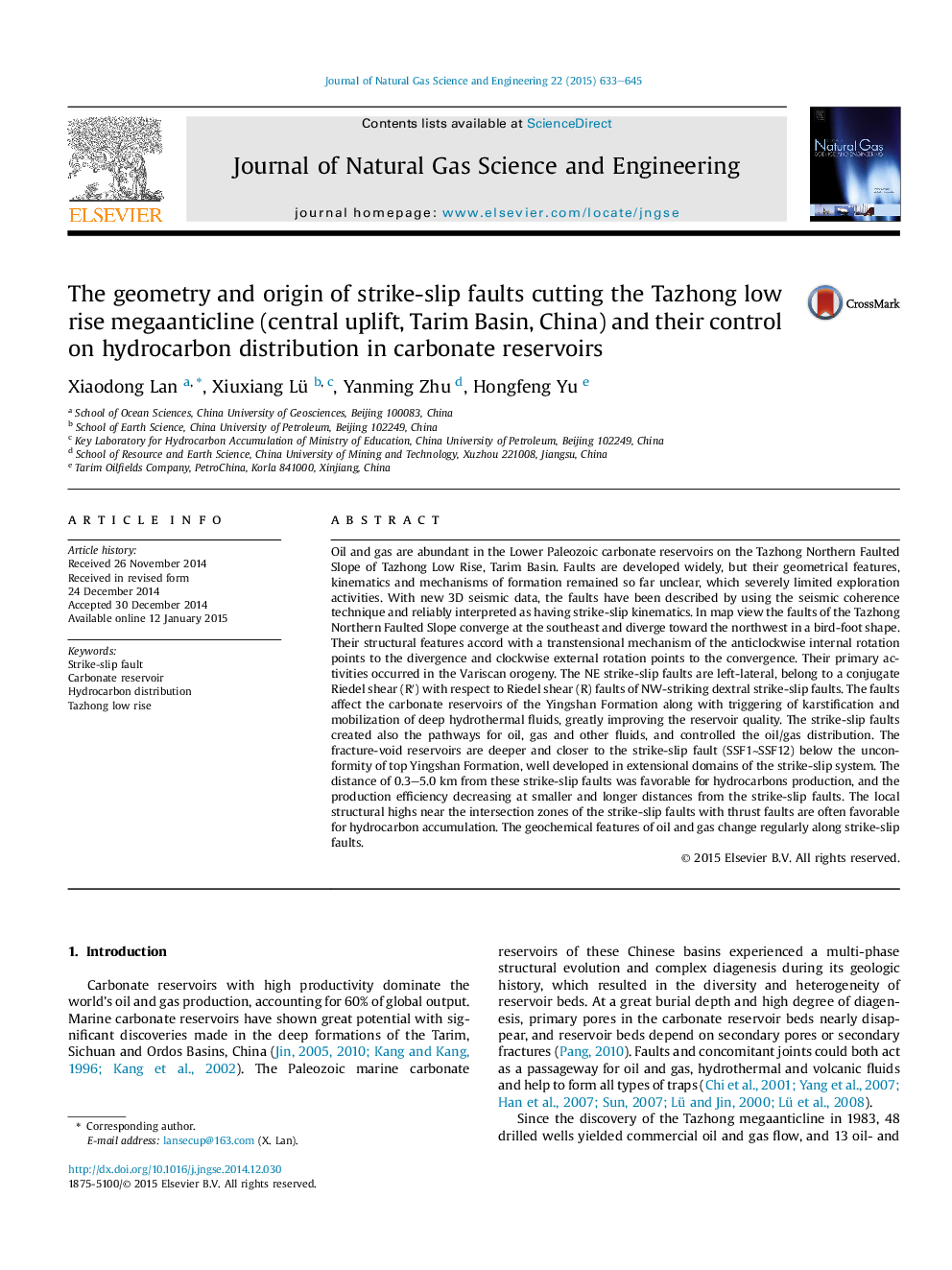| کد مقاله | کد نشریه | سال انتشار | مقاله انگلیسی | نسخه تمام متن |
|---|---|---|---|---|
| 1757849 | 1523018 | 2015 | 13 صفحه PDF | دانلود رایگان |
عنوان انگلیسی مقاله ISI
The geometry and origin of strike-slip faults cutting the Tazhong low rise megaanticline (central uplift, Tarim Basin, China) and their control on hydrocarbon distribution in carbonate reservoirs
دانلود مقاله + سفارش ترجمه
دانلود مقاله ISI انگلیسی
رایگان برای ایرانیان
کلمات کلیدی
موضوعات مرتبط
مهندسی و علوم پایه
علوم زمین و سیارات
علوم زمین و سیاره ای (عمومی)
پیش نمایش صفحه اول مقاله

چکیده انگلیسی
Oil and gas are abundant in the Lower Paleozoic carbonate reservoirs on the Tazhong Northern Faulted Slope of Tazhong Low Rise, Tarim Basin. Faults are developed widely, but their geometrical features, kinematics and mechanisms of formation remained so far unclear, which severely limited exploration activities. With new 3D seismic data, the faults have been described by using the seismic coherence technique and reliably interpreted as having strike-slip kinematics. In map view the faults of the Tazhong Northern Faulted Slope converge at the southeast and diverge toward the northwest in a bird-foot shape. Their structural features accord with a transtensional mechanism of the anticlockwise internal rotation points to the divergence and clockwise external rotation points to the convergence. Their primary activities occurred in the Variscan orogeny. The NE strike-slip faults are left-lateral, belong to a conjugate Riedel shear (Râ²) with respect to Riedel shear (R) faults of NW-striking dextral strike-slip faults. The faults affect the carbonate reservoirs of the Yingshan Formation along with triggering of karstification and mobilization of deep hydrothermal fluids, greatly improving the reservoir quality. The strike-slip faults created also the pathways for oil, gas and other fluids, and controlled the oil/gas distribution. The fracture-void reservoirs are deeper and closer to the strike-slip fault (SSF1â¼SSF12) below the unconformity of top Yingshan Formation, well developed in extensional domains of the strike-slip system. The distance of 0.3-5.0Â km from these strike-slip faults was favorable for hydrocarbons production, and the production efficiency decreasing at smaller and longer distances from the strike-slip faults. The local structural highs near the intersection zones of the strike-slip faults with thrust faults are often favorable for hydrocarbon accumulation. The geochemical features of oil and gas change regularly along strike-slip faults.
ناشر
Database: Elsevier - ScienceDirect (ساینس دایرکت)
Journal: Journal of Natural Gas Science and Engineering - Volume 22, January 2015, Pages 633-645
Journal: Journal of Natural Gas Science and Engineering - Volume 22, January 2015, Pages 633-645
نویسندگان
Xiaodong Lan, Xiuxiang Lü, Yanming Zhu, Hongfeng Yu,